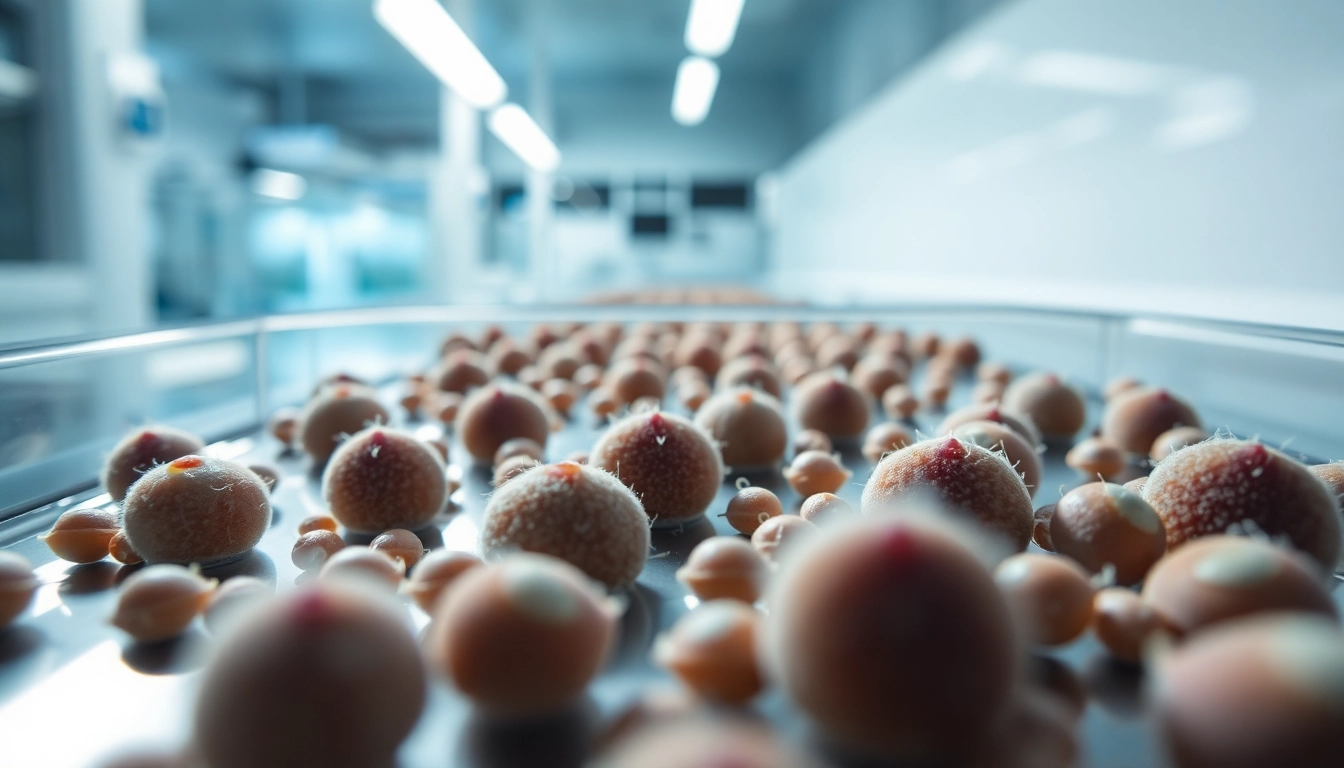Comprehensive Overview of TeSR™ Feeder-Free Pluripotent Stem Cell Culture Media
Understanding TeSR™ Feeder-Free Media
In the ever-evolving landscape of stem cell research, the methods and materials used to cultivate Pluripotent Stem Cells (PSCs) play a critical role in the success of experiments and applications. One such innovative solution is the TeSR™ family of feeder-free culture media, which has gained recognition for its efficiency and effectiveness. This comprehensive understanding of the TeSR™ media family will explore its components, applications, and advantages while shedding light on its significance in PSC culture.
What is Feeder-Free Culture Media?
Feeder-free culture media are solutions specifically formulated to support the growth and maintenance of PSCs without the need for feeder layers, which are typically derived from other cell types. Traditional PSC culture relies on these feeder layers to provide a supportive environment, but feeder-free media allows researchers to achieve higher levels of cell purity and reproducibility. TeSR™ media offers a chemically defined, xeno-free environment that ensures the cultivation of high-quality PSCs, facilitating enhanced experimental outcomes.
Importance of Feeder-Free Systems in PSC Culture
The significance of feeder-free systems cannot be overstated. Using feeder layers often introduces variability into stem cell cultures, as different feeder cells can produce inconsistent effects on PSC behavior. This inconsistency can lead to variability in pluripotency, differentiation capacity, and overall quality. By employing feeder-free systems, researchers can minimize this variability and focus on achieving reproducible results. In addition, feeder-free media eliminate the risk of contamination from animal-derived products, which is vital for maintaining the integrity of research studies.
Key Components of TeSR™ Media
TeSR™ media is specifically designed to contain all the necessary components that support the growth and maintenance of hPSCs. Key components include:
- Essential Nutrients: TeSR™ media provides a balanced mix of nutrients, including amino acids, vitamins, and minerals vital for cell growth.
- Growth Factors: The inclusion of growth factors, such as FGF2 (Fibroblast Growth Factor 2), ensures proper signaling for maintaining pluripotency.
- Cytokines: Specific cytokines are included to regulate cell proliferation and differentiation while supporting the defined environment.
- Buffering Agents: These agents help maintain pH stability, which is crucial for optimal cell cultivation.
Application of TeSR™ in Human Stem Cell Research
The wide-ranging applications of TeSR™ media in human stem cell research have positioned it as a critical element in modern biological studies. Researchers are increasingly turning to these substrates for various purposes, from reprogramming cells to differentiation protocols.
Reprogramming Induced Pluripotent Stem Cells
Induced Pluripotent Stem Cells (iPSCs) have revolutionized regenerative medicine by providing a limitless source of pluripotent cells. TeSR™ media significantly enhances the efficiency of iPSC reprogramming. For example, the use of specialized formulations like TeSR™-E7™ and ReproTeSR™ supports the creation of iPSCs from somatic cells such as fibroblasts and blood cells, delivering reliable and reproducible results during the reprogramming process.
Maintenance Strategies for hPSCs
Maintaining hPSCs in culture requires meticulous attention to detail. TeSR™ media provides an optimal environment that encourages self-renewal while preventing differentiation. Techniques such as regular medium changes, appropriate seeding densities, and utilizing mTeSR™ Plus can further enhance cell viability and function over extensive culture periods.
Differentiation Pathways for Tissue Engineering
The differentiation capabilities of hPSCs into specific cell lineages are one of the most promising aspects of stem cell research. With TeSR™ differentiation media, including TeSR™-E5™ and TeSR™-E6™, researchers can effectively guide hPSCs towards desired lineages. Notably, Dr. Joseph C. Wu’s work differentiating iPSCs into hematopoietic cells exemplifies the utility of TeSR™ in facilitating complex differentiation pathways.
Comparing TeSR™ Products: mTeSR™, eTeSR™, and More
Understanding the various TeSR™ products and their specific applications is crucial for researchers looking to optimize their experiments.
Features of mTeSR™ Plus
mTeSR™ Plus is a groundbreaking maintenance medium that improves upon the original mTeSR™1 formulation. It is designed to be more stable under extended culture conditions. Key enhancements include:
- Stabilized Components: mTeSR™ Plus includes enhanced buffering and stabilized growth factors, which reduce acidification and improve cell quality.
- Flexible Maintenance: This medium supports weekend-free maintenance schedules, making it ideal for laboratories with varying workloads.
Applications of TeSR™-E8™
Launched as a simplified alternative, TeSR™-E8™ provides a low-protein maintenance solution that consists solely of essential components necessary for hPSC maintenance. This formulation streamlines processes without compromising cell quality, thereby enhancing efficiency in routine laboratory work.
When to Use TeSR™-AOF
TeSR™-AOF (Animal Origin-Free) is particularly advantageous for applications requiring stringent safety protocols free from animal-derived components. Suitable for both research and clinical applications, this formulation guarantees viral safety and quality control, representing an essential choice for laboratories focusing on human therapeutic development.
Best Practices for Using TeSR™ Media
Maximizing the effectiveness of TeSR™ media entails adopting best practices tailored to your specific research needs.
Conditions for Optimal Cell Growth
To promote optimal growth, maintain hPSCs in a controlled environment. Key factors include:
- Temperature and CO2 Levels: Culturing at 37°C with a 5% CO2 concentration is vital for cellular homeostasis.
- Regular Medium Changes: Changing the culture medium every 2-3 days promotes nutrient replenishment and waste removal.
- Aseptic Techniques: Apply stringent aseptic techniques to minimize contamination risks, which can adversely affect cell viability.
Monitoring and Adjusting Culture Conditions
Engaging in routine monitoring of cell morphology, proliferation rates, and viability is critical. Consider using automated cell counters and microscopy to regularly assess cell health and make timely adjustments to culture conditions as needed.
Strategies for Long-term Preservation
For long-term preservation of hPSCs, utilizing cryopreservation techniques with media like mFreSR™ and FreSR™-S is essential. These products are tailored for optimizing cell viability during freezing and thawing processes, thereby ensuring a reliable source of cells for future experiments.
Future Trends in Pluripotent Stem Cell Culture
The field of pluripotent stem cell culture is rapidly advancing, with several key trends emerging that promise to enhance research and applications.
Emerging Research in Stem Cell Applications
New avenues in regenerative medicine, such as tissue engineering and organoid development, are being explored using PSCs. Research focuses on understanding the mechanisms underlying stem cell differentiation and advancing the production of functional tissues for therapeutic purposes.
Regulatory Developments Affecting Stem Cell Research
As the regulatory landscape evolves, compliance with standards and guidelines is becoming increasingly critical. The move towards cGMP (current Good Manufacturing Practices) for stem cell culture media, including products within the TeSR™ portfolio, highlights a growing emphasis on quality control and safety.
Innovations in Stem Cell Media Formulation
Continuous innovation in media formulation is key to enhancing the efficiency and effectiveness of stem cell cultures. The introduction of more defined media with reduced complexity is expected to further improve reproducibility and cell quality, ultimately leading to more robust research outcomes.














Post Comment